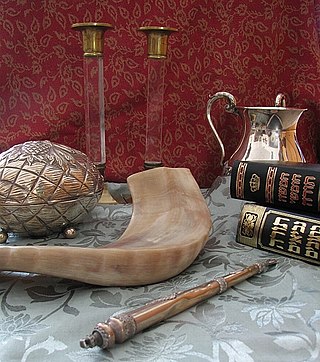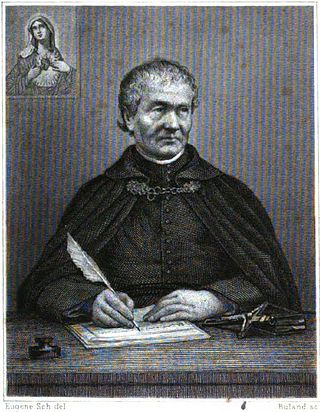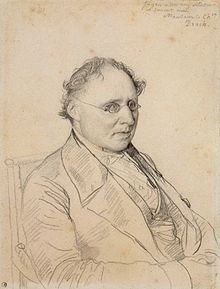Christianity began as a movement within Second Temple Judaism, but the two religions gradually diverged over the first few centuries of the Christian Era. Today, differences of opinion vary between denominations in both religions, but the most important distinction is Christian acceptance and Jewish non-acceptance of Jesus as the Messiah prophesied in the Hebrew Bible and Jewish tradition. Early Christianity distinguished itself by determining that observance of halakha was not necessary for non-Jewish converts to Christianity. Another major difference is the two religions' conceptions of God. The Christian God consists of three persons of one essence, with the doctrine of the incarnation of the Son in Jesus being of special importance. Judaism emphasizes the Oneness of God and rejects the Christian concept of God in human form. While Christianity recognizes the Hebrew Bible as part of its scriptural canon, Judaism does not recognize the Christian New Testament.

Judaism is an Abrahamic, monotheistic, and widely an ethnic religion. It comprises the collective spiritual, cultural, and legal traditions of the Jewish people, having originated as an organized religion in the Middle East during the Bronze Age. Contemporary Judaism evolved from Yahwism, the cultic religious movement of ancient Israel and Judah, around the 6th/5th century BCE, and is thus considered to be one of the oldest monotheistic religions. Religious Jews regard Judaism as their means of observing the Mosaic covenant, which was established between God and the Israelites, their ancestors. Along with the Samaritanism, Judaism is one of the two oldest Abrahamic religions.

Solomon Schechter was a Moldavian-born British-American rabbi, academic scholar and educator, most famous for his roles as founder and President of the United Synagogue of America, President of the Jewish Theological Seminary of America, and architect of American Conservative Judaism.

The Jewish Theological Seminary (JTS) is a Conservative Jewish education organization in New York City, New York. It is one of the academic and spiritual centers of Conservative Judaism and a center for academic scholarship in Jewish studies. The Jewish Theological Seminary Library is one of the most significant collections of Judaica in the world.
The Pharisees were a Jewish social movement and a school of thought in the Levant during the time of Second Temple Judaism. After the destruction of the Second Temple in 70 CE, Pharisaic beliefs became the foundational, liturgical, and ritualistic basis for Rabbinic Judaism.

Louis Finkelstein was a Talmud scholar, an expert in Jewish law, and a leader of the Jewish Theological Seminary of America (JTS) and Conservative Judaism.

In the scholastic system of education of the Middle Ages, disputations offered a formalized method of debate designed to uncover and establish truths in theology and in sciences. Fixed rules governed the process: they demanded dependence on traditional written authorities and the thorough understanding of each argument on each side.
Adherents of Judaism believe that Jesus of Nazareth was not the Messiah nor "the Son of God". In the Jewish perspective, it is believed that the way Christians see Jesus goes against monotheism, a belief in the absolute unity and singularity of God, which is central to Judaism; the worship of a person is seen by them as a form of idolatry. Therefore, considering Jesus divine, as “God the Son”, is forbidden according to Judaism. Judaism's rejection of Jesus as the Messiah is based on Jewish eschatology, which holds that the coming of the true Messiah will be associated with events that have not yet occurred, such as the rebuilding of The Temple, a Messianic Age of peace, and the ingathering of Jews to their homeland.

Nicholas of Lyra, or Nicolaus Lyranus, a Franciscan teacher, was among the most influential practitioners of biblical exegesis in the Middle Ages. Little is known about his youth, aside from the fact of his birth, around 1270, in Lyre, Normandy.

Eugenio Maria Zolli, born Israel Anton Zoller, was an Austrian by birth, and an Italian doctorate professor of philosophy and author. Until his conversion from Judaism to Catholicism in February 1945, Zolli was the chief rabbi in Rome, Italy's Jewish community from 1940 to 1945. After the war, he taught philosophy at a number of institutions throughout Rome including the Sapienza University of Rome and Pontifical Biblical Institute.

The history of the Jews in Europe spans a period of over two thousand years. Jews, an Israelite tribe from Judea in the Levant, began migrating to Europe just before the rise of the Roman Empire. Although Alexandrian Jews had already migrated to Rome, a notable early event in the history of the Jews in the Roman Empire was the 63 BCE siege of Jerusalem.

Francis Mary Paul Libermann was a French Jewish convert to Catholicism and a Spiritan priest. He is best known for founding the Society of the Holy Heart of Mary, which later merged with the Spiritans. He is often referred to as "The Second Founder of the Spiritans". He was declared venerable in the Catholic Church on 1 June 1876, by Pope Pius IX.
Giovanni Giuda Giona Battista was a convert from Judaism to Catholicism and agent for the king of Poland. His original name was Jehuda Jona Ben-Isaac.
Nicholas Donin of La Rochelle, a Jewish convert to Christianity in early thirteenth-century Paris, is known for his role in the 1240 Disputation of Paris, which resulted in a decree for the public burning of all available manuscripts of the Talmud. Latin sources referred to him as "Repellus," referring to his native La Rochelle.
This timeline of antisemitism chronicles events in the history of antisemitism, hostile actions or discrimination against Jews as members of a religious and/or ethnic group. It includes events in Jewish history and the history of antisemitic thought, actions which were undertaken in order to counter antisemitism or alleviate its effects, and events that affected the prevalence of antisemitism in later years. The history of antisemitism can be traced from ancient times to the present day.
Hellenistic Judaism was a form of Judaism in classical antiquity that combined Jewish religious tradition with elements of Hellenistic culture. Until the early Muslim conquests of the eastern Mediterranean, the main centers of Hellenistic Judaism were Alexandria in Egypt and Antioch in Syria, the two main Greek urban settlements of the Middle East and North Africa, both founded in the end of the fourth century BCE in the wake of the conquests of Alexander the Great. Hellenistic Judaism also existed in Jerusalem during the Second Temple Period, where there was a conflict between Hellenizers and traditionalists.

The history of the Jews in Alsace is one of the oldest in Europe. It was first attested to in 1165 by Benjamin of Tudela, who wrote about a "large number of learned men" in "Astransbourg"; and it is assumed that it dates back to around the year 1000. Although Jewish life in Alsace was often disrupted by outbreaks of pogroms, at least during the Middle Ages, and reined in by harsh restrictions on business and movement, it has had a continuous existence ever since it was first recorded. At its peak, in 1870, the Jewish community of Alsace numbered 35,000 people.

The Disputation of Paris, also known as the Trial of the Talmud, took place in 1240 at the court of King Louis IX of France. It followed the work of Nicholas Donin, a Jewish convert to Christianity who translated the Talmud and pressed 35 charges against it to Pope Gregory IX by quoting a series of blasphemous passages about Jesus, Mary, or Christianity. Four rabbis defended the Talmud against Donin's accusations.

Shmuel Shapiro (Hebrew: שמואל שפירו, a French Jewish rabbi, hazzan, singer, composer, lecturer, and former Chief Rabbi of Meurthe-et-Moselle and Nancy, France, was born in Aix-les-Bains, France, on 26 January 1974.












